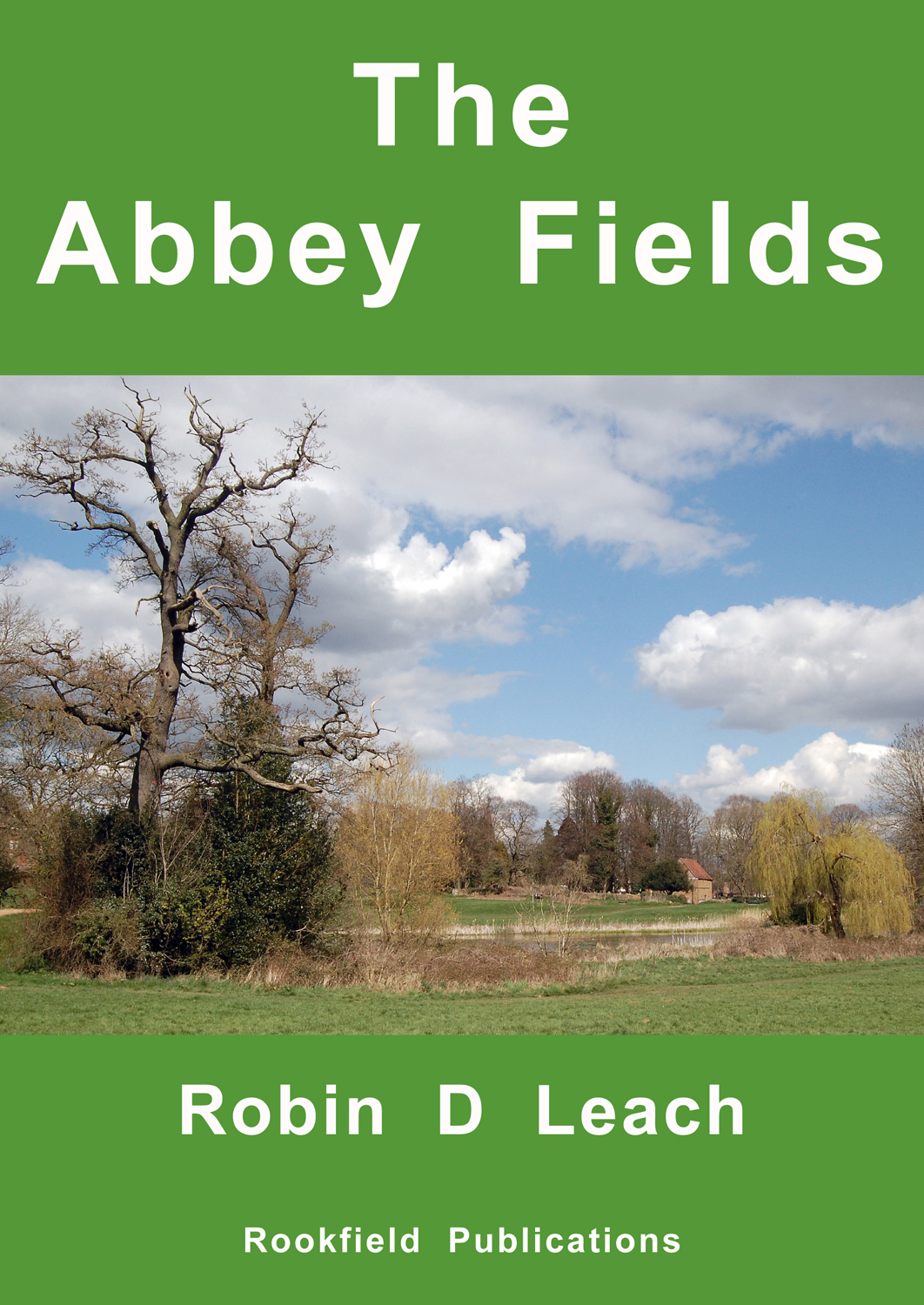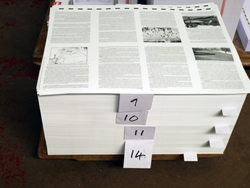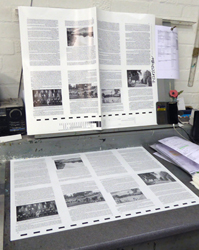The Abbey Fields

2 04 pages (17cm x 24cm), over 140 illustrations, rrp £12.95 Now reduced to £9


Pages in process at Emmerson Print, 25th July 2017
Today the Abbey Fields plays a central role in the lives of Kenilworth’s townsfolk, a vital and much-loved ‘open-space’ for relaxation and recreation, but well before they became a park in 1884, they were established as a place of leisure. They were used to celebrate events (such as in 1858 when Queen Victoria passed through town and over half the population sat down to a meal in the fields), as a cricket field, by youths for bathing in the brook (then 4 or 5 feet deep), and as a route between the southern and northern parts of the town.
By 1880 the churchyard of St Nicholas needed to be extended but the Earl of Clarendon who owned the Abbey Fields estate of 78 acres and 19 cottages, would not allow it; instead he put it all up for sale ostensibly as building land, but the Local Board saw its chance to buy the estate to expand the churchyard, and save the rest of the fields for permanent recreational use. The negotiations were complicated, the purchase was at one time deemed illegal, and the Local Board had no means to purchase it all, but a scheme was eventually finalised and Clarendon sold. The Board bought 40 acres, a group of preservationists 13 acres, and a syndicate of Board members privately bought the rest including Little Virginia.
Once the first 40 acres were acquired, the Abbey Fields were developed into the town’s park despite the presence of grazing sheep and cattle; the income from grazing rents paid off the loan to purchase the fields and helped to provide facilities. Over the next 90 years another 25 acres or so were added by land donations from individuals or by purchasing further areas from the syndicate.
The provision of recreational facilities was always uppermost. The swimming pool in 1896 was the first amenity constructed due to a promise in a political manifesto; it was then rebuilt into a lido in 1935 with the indoor pool added 50 years later. The children’s play area is now almost a century old, but it took 115 years for the lake, first suggested in the 1880s, to come to fruition. The bowling green (built by and for a private club), tennis courts, putting, and mini-golf were all added, and the town’s sporting clubs and schools had use of three football pitches and a hockey pitch; all contributed to the Abbey Fields becoming part of the daily lives of the townsfolk.
Not all ideas were carried out; amongst the schemes that failed are a toboggan run, an indoor firing range, a paddling pool, shelters, 20ft wide canals, and a central car park for the swimming pool.
Cycling and horse-riding were allowed but became restricted and eventually banned; trees were controversially planted and petitions were signed in an attempt to preserve the view of St Nicholas church from Abbey Hill; the fire brigade used the fields to practice and display its equipment; major events continued to be celebrated. During both world wars areas were cultivated. The 1950s saw the creation of a showground (still in use today), hedges were removed to increase the open space, and grazing finally ended in 1963 and after 80 years the fields were at last in use solely as a park.
Always of interest of course are the Abbey ruins, both above and below ground. High unemployment led to a major excavation in the 1920s and more recently other smaller investigations have taken place. Above ground the Barn became a museum, twice; the condition of the Tantara Gatehouse often caused concern in its constant battle with the elements; the Chapter House wall regularly crumbles.
Whilst the park was developing, parts of the estate owned by the syndicate were sold for housing, and the dilapidated Little Virginia and other cottages were renovated; this too is included in the book.
Since the formation of Warwick District Council, the fields have changed; gone are many of the recreational facilities through lack of use or relocation, and over the last 15 years or so the park has been transformed by the creation of wildlife habitats.
‘The Abbey Fields’ records all the developments and changes, controversial plans and schemes, and the people who made it all happen.
The book starts with the field’s formation in the ice age, continues with the building of the Priory and destruction of the Abbey, but concentrates on its years as a park, and closes with information from June 2017 bringing the story up to date. It has 204 pages, with over 140 illustrations: photographs, some dating back to the 1880s, are from public and private collections, and the author’s own extensive library; plans are from the original documents, OS maps chart the changes in the central area.
Whilst the Abbey and Castle are well documented, the town’s third major attraction, the Abbey Fields, has been overlooked. This comprehensive work, with some research dating back more than 30 years, fills the gap.
Contents:
Chapter 1, Public Walks and Pleasure Grounds (from the ice age to WW1)
Landform; the Priory is built, the Abbey destroyed; animals graze; a park created; the Abbey excavated; a swimming pool built; houses appear on the estate; a club builds a bowling green.
Chapter 2, To Benefit the Community (WW1 to WW2)
The Great War; more land donated; tennis courts and a children’s playground are built; more of the Abbey excavated; sports pitches are created; the swimming pool becomes a lido; a museum; another land donation, but some land lost.
Chapter 3, Privileges of the Abbey Fields (WW2 to 1974)
The Second World War; a showground created; land is lost; a temporary car park is made; grazing ends; the swimming pool improved; pitch & putt; two new areas of land added.
Chapter 4, A Municipal Park or Rural Open Countryside (1974 to 2017)
Abbey Fields no longer belongs to Kenilworth; a new museum; more ruin excavations; a lake at last; amenities lost; a new indoor pool; groups and societies become involved; the car park becomes permanent; play equipment extended.
(Chapter titles are contemporary quotes taken from the text)
A small extract from the book:
http://www.khas.co.uk/the-swimming-pool-abbey-fields-then-now/
Abbey fields articles:
How the land was acquired Full details on how each plot became part of the park between 1884 and 1974.
The Covenants Each plot came with a covenant and restrictions
Abbey Fields Cycle Path Always under discussion, a complete record of attempts for cycling to return to the park
The Swimming Pool The history of the pool from its origins in the 1890s until the present day, with a number of photographs
Car Parking in the Abbey Fields How the car park came about
Bye-laws The non-observance of bye-laws is often discussed, here you can see them all
Abbey Fields Archaeology A guide to the many archaeological explorations of the Abbey and its surroundings from 1840 to the present day
Abbey Fields Play Equipment Some aspects of the park play equipment, now established over a century
Abbey Fields Timeline A chronology of the Abbey Fields starting in the ice age!